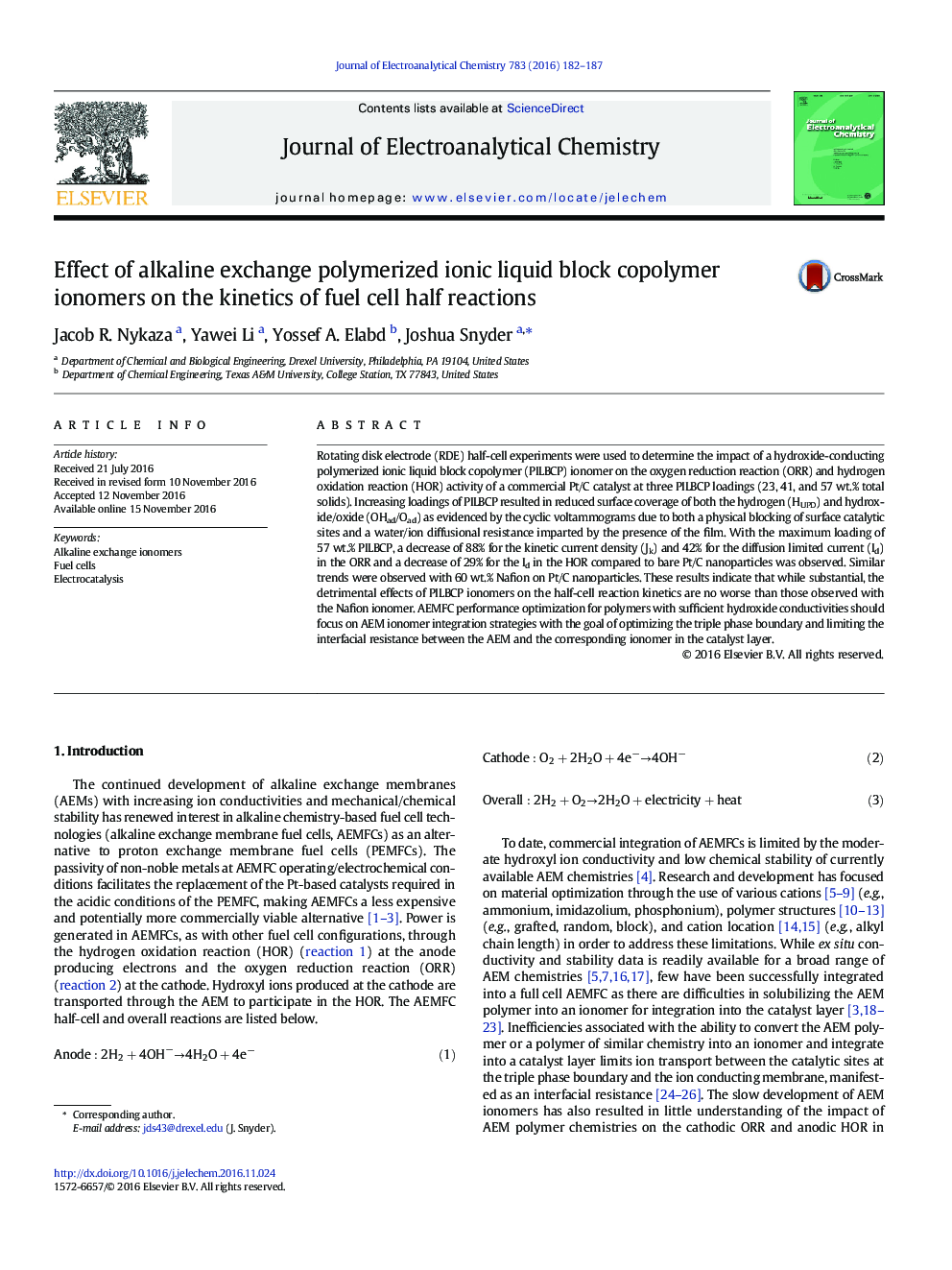| کد مقاله | کد نشریه | سال انتشار | مقاله انگلیسی | نسخه تمام متن |
|---|---|---|---|---|
| 6477080 | 1426592 | 2016 | 6 صفحه PDF | دانلود رایگان |
- Hydroxide-conducting polymerized ionic liquid block copolymer ionomer negatively impacts the kinetics of fuel cell reactions.
- While substantial, the detrimental impact of PILBCP ionomers on reaction kinetics are no worse than those observed for Nafion.
- AEMFC performance optimization should focus on AEM ionomer integration strategies to limit interfacial resistance.
Rotating disk electrode (RDE) half-cell experiments were used to determine the impact of a hydroxide-conducting polymerized ionic liquid block copolymer (PILBCP) ionomer on the oxygen reduction reaction (ORR) and hydrogen oxidation reaction (HOR) activity of a commercial Pt/C catalyst at three PILBCP loadings (23, 41, and 57Â wt.% total solids). Increasing loadings of PILBCP resulted in reduced surface coverage of both the hydrogen (HUPD) and hydroxide/oxide (OHad/Oad) as evidenced by the cyclic voltammograms due to both a physical blocking of surface catalytic sites and a water/ion diffusional resistance imparted by the presence of the film. With the maximum loading of 57Â wt.% PILBCP, a decrease of 88% for the kinetic current density (Jk) and 42% for the diffusion limited current (Id) in the ORR and a decrease of 29% for the Id in the HOR compared to bare Pt/C nanoparticles was observed. Similar trends were observed with 60Â wt.% Nafion on Pt/C nanoparticles. These results indicate that while substantial, the detrimental effects of PILBCP ionomers on the half-cell reaction kinetics are no worse than those observed with the Nafion ionomer. AEMFC performance optimization for polymers with sufficient hydroxide conductivities should focus on AEM ionomer integration strategies with the goal of optimizing the triple phase boundary and limiting the interfacial resistance between the AEM and the corresponding ionomer in the catalyst layer.
Journal: Journal of Electroanalytical Chemistry - Volume 783, 15 December 2016, Pages 182-187
